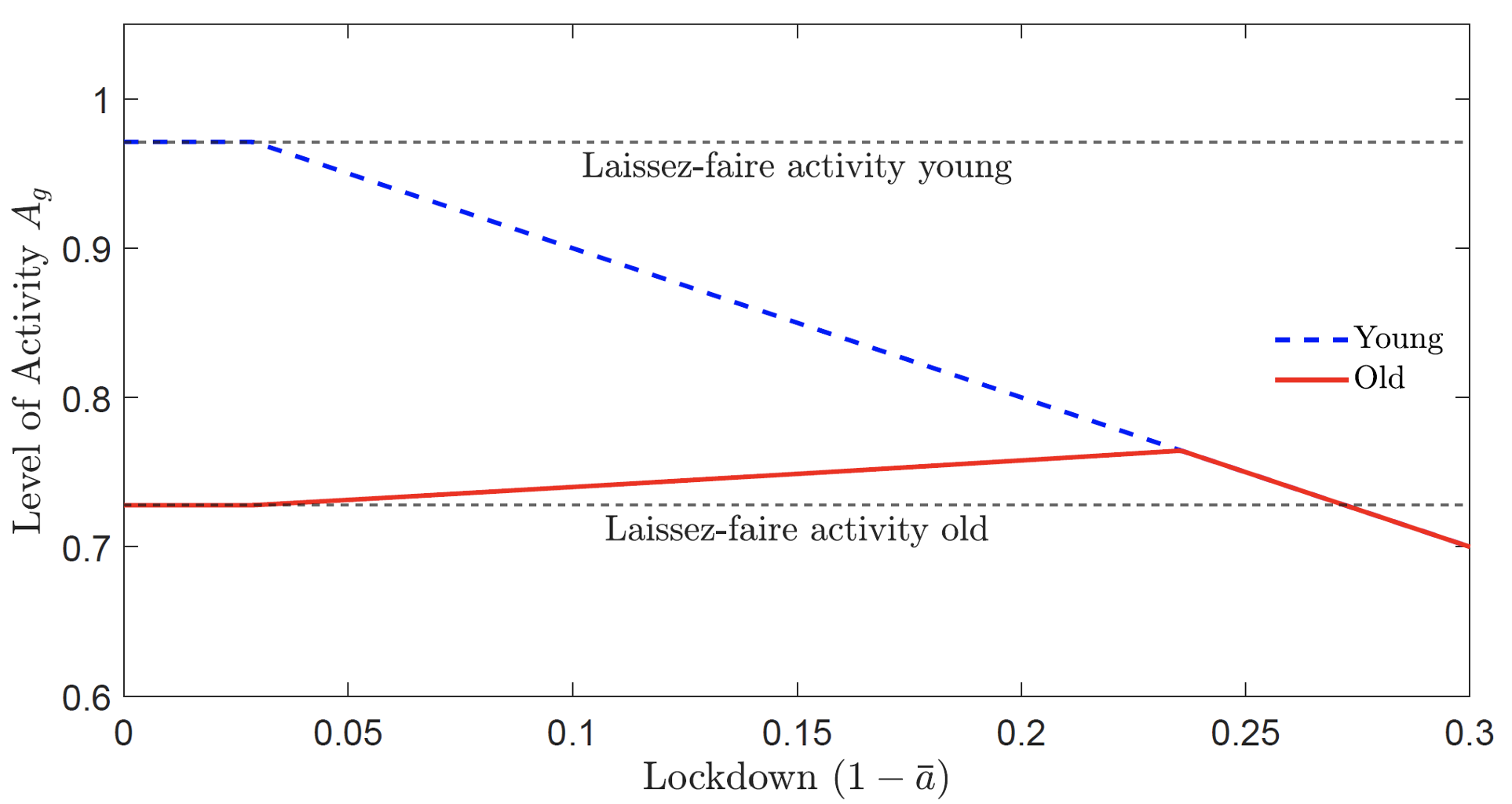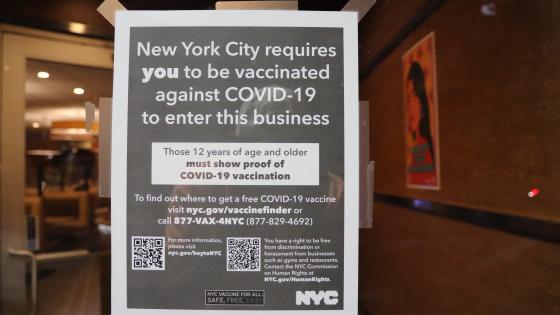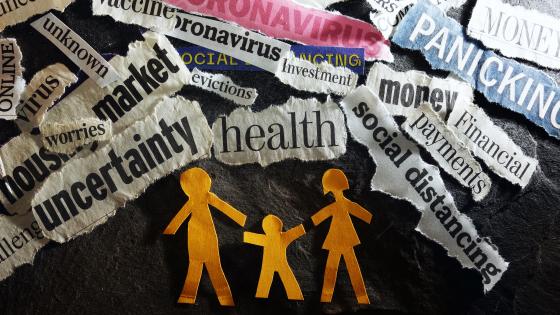As Covid infections and deaths are declining, the debate is shifting from the costs and benefits of social distancing and mandating vaccination (Guiso et al. 2020, Robinson et al. 2022) to the implications of long Covid and human capital losses due to school closures (Blanchflower et al. 2023, De La Maisonneuve et al. 2023). At the same time – not least to better confront future pandemics – it remains important to assess the effectiveness of the public policy measures which were implemented in response to Covid during the years 2020–2022.
Why wouldn’t policies be effective? Beyond basic problems of implementation and compliance, there is a more fundamental issue, which we develop formally in a recent paper (Dietrich et al. 2023). We show that the polices implemented in response to the pandemic, though clearly desirable from a medical point of view, were bound to deliver somewhat disappointing results. Precisely because they create a safer environment, they induce people to adjust their behaviour in ways which may partly (or even fully) offset the direct effect of the policy. Peltzman (1975) was the first to analyse this type of adjustment in the context of traffic safety regulation. We put it at centre stage of our analysis of pandemics.
Accounting for the human factor in the SIR model
We use a very stylised susceptible-infected-recovered (SIR) model, as frequently employed to study infection dynamics, which we extend to allow for (rational) adjustment of behaviour (social activity) in response to both the state of the pandemic and policy measures. In contrast, the classic approach towards modelling infection dynamics assumes human behaviour remains unchanged during the pandemic and hence entirely unresponsive to changes in peoples’ infection risk. Instead, accounting for the ‘human factor’ – that is, forward-looking and potentially rational adjustment of individual behaviour – is the genuine perspective of economics, and there have been numerous attempts to extend the SIR model along these lines (see Bloom et al. 2022 for a survey).
Our paper makes this point as transparent as possible using what we consider the simplest extension of the SIR model. Two points are key in this regard. First, we collapse the entire pandemic into three periods: (1) the pre-policy period, which summarises the state of the pandemic prior to the policy intervention; (2) the policy period; and (3) the post-pandemic period. Second, rather than modelling economic activities such as consumption or work, we simply consider a generic choice of a social activity level. Individuals’ decision is then governed by a simple intertemporal trade off: a higher activity level increases current wellbeing but lowers the probability of making it to the post-pandemic life, because the social activity level determines the risk of becoming infected and thus the likelihood of dying from an infection.
People’s rational response to regulation: The Peltzman effect
Due to these simplifications, we are able to provide a succinct, closed-form analysis of the rational adjustment to the pandemic and implemented policies, instead of resorting to model simulations. In what follows, we summarise our main results in an intuitive way. First, the effect of vaccinations on infections and deaths is ambiguous. Individuals weigh the risk of dying against present day wellbeing, which increases with the activity level. As vaccinations lower the risk of infection and death associated with the initial activity level, they tilt this balance in favour of activity. Rational individuals respond by increasing their activity – the Peltzman effect. Crucially, in their response, individuals ignore the so-called infection externality, that is, the risk of passing on the disease once they have caught it. We show that unless people are sufficiently risk averse, the Peltzman effect may offset the direct effect of vaccinations, giving rise to more infections and – in the extreme – even more deaths.
Second, we argue that a Peltzman effect is likely to arise also for a lockdown policy that is uniformly imposed on a heterogeneous population where some individuals are more vulnerable to the disease than others. For simplicity, we distinguish between two groups and refer to more vulnerable as the ‘old’, in contrast to the ‘young’. Being aware of their vulnerability, the old exercise more social restraint than the young once the pandemic arrives and before a lockdown is imposed. Assuming that it mandates social distancing uniformly for the whole population, the lockdown is then more likely to constrain the behaviour of the young than that of the old. As it lowers the infection risk for all, the old may respond by increasing their social activity. This unambiguously implies a higher case fatality rate and – depending on parameters – may even increase mortality.
Figure 1 Activity levels and lockdown intensity
Notes: Activity level of the young (blue dashed line) and old (red solid line) measured against vertical axis and lockdown stringency measured against horizontal axis. Horizonal, dashed line indicates activity level in the absence of lockdown (“Laissez faire”).
The situation is illustrated by Figure 1. The activity levels of the old (red solid line) and the young (blue dashed line) are measured against the vertical axis, with the lockdown stringency measured along the horizontal axis. Note that, absent a pandemic, the activity level is normalised to one for both groups. Once the pandemic arrives, but absent any lockdown, the old show more restraint on their social activity than the young. This situation is represented at the far-left side of the figure. As we move to the right and consider an increasing lockdown stringency, we first observe no change in the activity levels because very moderate lockdown levels are not constraining the level of activity even for the young, relative to its laissez-faire level. This changes eventually: the activity level of the young, represented by the blue line, starts to decline at some point. In response to this, the old start to raise their activity level. This is the Peltzman effect: the old become more active because social activity is less risky for them once the young are constrained by the lockdown. As a result, the composition of the infected changes in favour of the old and, hence, the case fatality rate goes up: more people among the infected die. In our paper, we establish conditions under which the mortality goes up too.
Some evidence
In the paper, we also present evidence on actual infection dynamics based on monthly observations for US states and countries of the EU, respectively. First, we find neither current infections nor deaths are much correlated with vaccination rates in previous months, consistent with the notion that behavioural adjustment largely offsets the direct impact of vaccinations. Turning to lockdowns, we distinguish between (1) an early period prior to vaccinations, and (2) a later period when vaccinations had become available. We find that the lockdown stringency is negatively related to mortality, and more so in the second period, but positively related to case fatality, and more so in the first period. We argue that these results are again consistent with a Peltzman effect of the type we highlight in our model, since vaccinations lower the degree of heterogeneity in the population in terms of vulnerability.
References
Blanchflower, D and A Bryson (2023), “Long Covid in the United States”, VoxEU.org, 28 February.
Bloom, D E, M Kuhn, and K Prettner (2022), “Modern infectious diseases: macroeconomic impacts and policy responses", Journal of Economic Literature 60(1): 85-131.
De La Maisonneuve, C, B Égert and D Turner (2023), “Quantifying the macroeconomic impact of COVID-19-related school closures on Human Capital”, VoxEU.org, 24 January.
Dietrich, A, W Kohler and G J Müller (2023), “Pandemics, Public Policy, and Peltzman Effects”, CEPR Discussion Paper 17952.
Guiso, L, G Gulino and R Durante (2020), “Civic Capital and Social Distancing: Evidence from Italians’ response to COVID-19”, VoxEU.org, April.
Peltzman, S (1975), “The effects of automobile safety regulation”, Journal of Political Economy 83(4): 677- 725.
Robinson, L, M Ferranna, D Cadarette, M Eber and D Bloom (2023), “Mandating Covid-19 vaccination: The benefits and the costs”, VoxEU.org, December.






